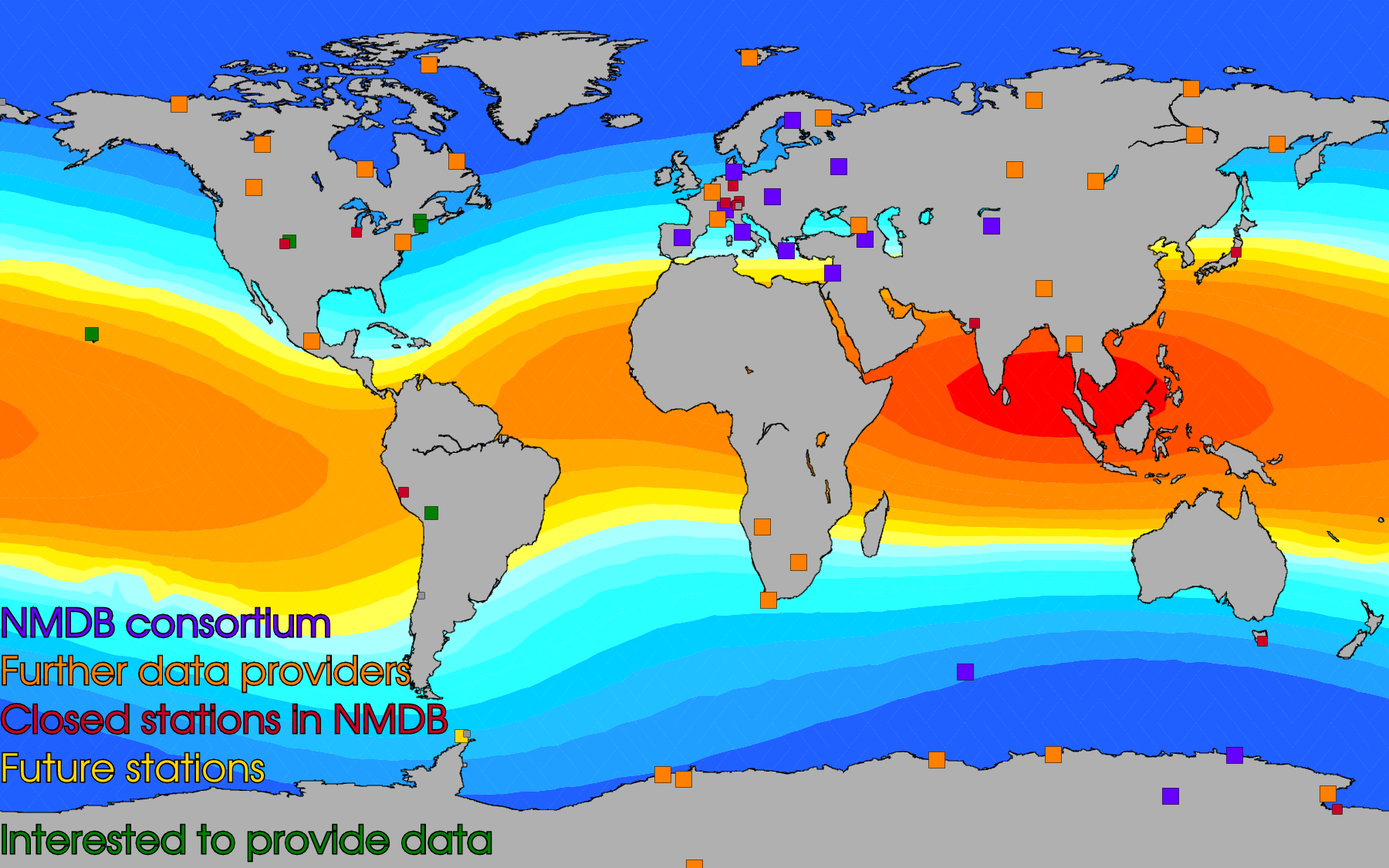NMDB - The Neutron Monitor Database
From a single Neutron Monitor to an International Network:
the Real-Time Database for High-Resolution Neutron Monitor Measurements (NMDB)

Cosmic rays are routinely measured by standardized ground-based Neutron
Monitors (NM) around the world. Stations provide measurements as 1-hour
averages to the World-Data Center for Cosmic Rays, but most stations can
also provide high-resolution measurements at 1-minute cadence.
Measurements
of one station provide information about the cosmic ray intensity over time
at this location. By correcting the measurement for changes in atmospheric
pressure, the intensity of the incoming radiation at the top of the
atmosphere can be determined. Studying this time series gives information
about long-term changes in the heliospheric environment (11 and 22 year
solar cycles), as well as information on shorter (Forbush decrease, Fd) and
impulsive (Ground Level Enhancement, GLE) events.
Since the measurement of a
NM is a cumulative measurement, a single station can provide only limited
information on the spectrum of the incoming radiation. The whole network of
Neutron Monitors, however, can act as a large spectrometer. By combining the
measurements of many NM stations, the direction and the spectrum of the
incoming radiation can be modeled. With this method, high energy solar
particle events (that lead to GLEs) and the precursors of Coronal Mass
Ejections (CME, manifesting as a Fd) can be detected by the ground-based
instruments before the lower energy particles can harm satellites or
astronauts.
These ALERT systems require the availability of NM data in
real-time, which has been provided by the NMDB project. The goals of NMDB
(nmdb.eu, real-time database for high-resolution Neutron Monitor
measurements, funded by the European Commission) are to make NM data easily
available in real-time to everyone for non-commercial purposes. The easy to
use NEST interface (nest.nmdb.eu) to NMDB data allows everyone to plot and
download data for all participating stations. Since the project started, not
only space agencies and ALERT systems make use of the data, but NMDB has
attracted several users outside the cosmic ray community. This data is now
also used for example as reference value for soil humidity measurements with
cosmic rays, or by the DHS for radiation monitors at border crossings, as
well as for computer companies testing the susceptibility of their ICs to
cosmic rays. These new uses have only become possible since the individual
stations have agreed to share their data freely.
We encourage all Neutron
Monitor stations that are not yet part of NMDB to join the network, and the
space and funding agencies to continue to support these important
measurements.

Contact
Christian Steigies